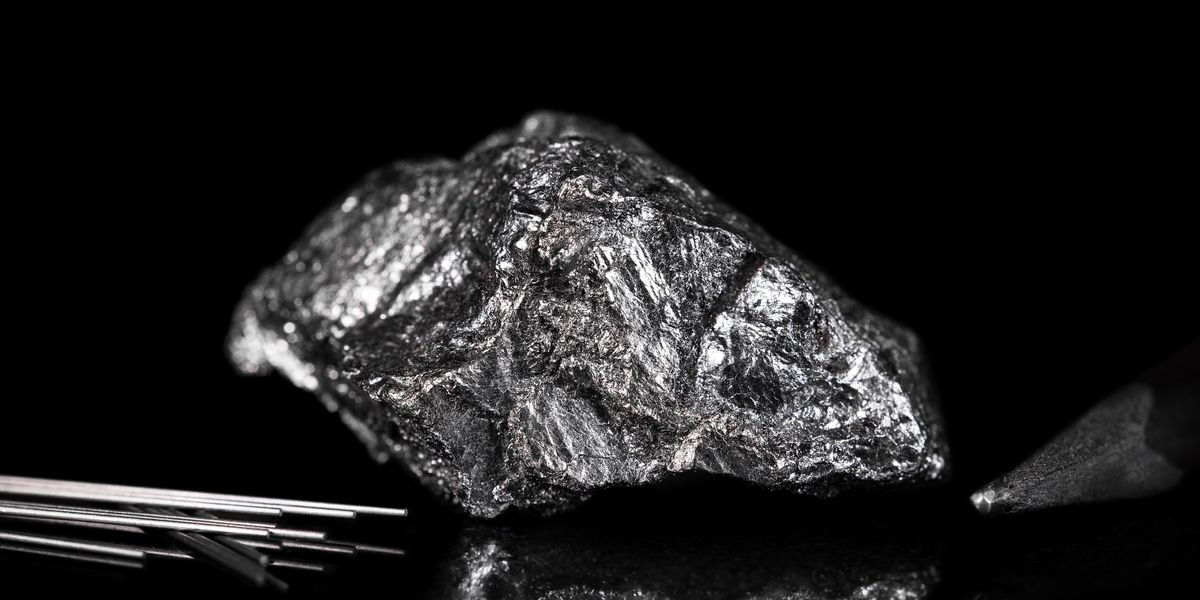Even though it is sometimes overlooked as a battery metal, graphite is at the forefront of the anode supply chain.
In fact, market intelligence publisher Benchmark Mineral Intelligence is forecasting that natural and synthetic graphite anodes will maintain their dominance over anode market share up until 2040.
“We really believe that graphite-dominant anodes will continue to capture the majority of market share moving forward due to established processing and production technologies at present, meaning automakers have qualified these chemistries into their supply chains,” George Miller, senior analyst at the firm, said at this year’s Benchmark Week event. “And this is really combined with favorable cost stability and performance of battery-based anodes.”
Speaking at the Los Angeles-based conference, Miller added that although there is currently greater demand for synthetic anodes, demand for natural anodes is predicted to overtake synthetic this decade.
China dominates many aspects of the resource sector, and graphite is no different — the Asian country controls about 64 percent of natural graphite supply, according to data from Benchmark Mineral Intelligence.
“The industry has a big problem where all these car companies are saying, ‘Where are we getting the product from? Where’s it going to come from?’ First of all, take away 70 percent of your market because it’s China and Russia; then you have 30 percent of the market, and 30 percent of that market is not ready,” said Brent Nykoliation of NextSource Materials (TSX:NEXT,OTCQB:NSRCF), which is developing its 100 percent owned Molo graphite project in Madagascar.
“There is a scarcity of graphite projects, there’s a scarcity of economic projects and there’s a scarcity of projects that actually are going to be vertically integrated,” he explained in a panel at the Benchmark Week event. “Manufacturers, especially for graphite, are looking for one criteria you have to have: you must be vertically integrated.”
In order to meet the unprecedented demand expected in the coming decades, Benchmark Mineral Intelligence estimates that up to 150 new operations across natural and synthetic graphite are needed by 2035.
“When you look towards the tail end of the decade, what you can see is both natural and synthetic graphite are facing serious structural issues to meet that type of demand and fall into a significant deficit,” Andrew Miller, chief operating officer at Benchmark Mineral Intelligence, told the audience attending Benchmark Week in mid-November.
Western governments are moving to decrease dependence on China, but the world is playing catch up when it comes to graphite.
“I think we’d be foolish to sit here and say that we’re going to displace China overnight. Of all areas of the supply chain, the graphite anode part is where China is the most dominant,” Miller said. “So displacing China is going to be incredibly difficult, but it’s essential. And it needs to be done very quickly. We need to diversify that supply base.”
Commenting from a geopolitical standpoint, Hugues Jacquemin of Northern Graphite (TSXV:NGC,OTCQB:NGPHF), which owns the Lac des Iles mine in Quebec, said the market is extremely resilient.
“One of the things that usually happens is demand will be met, no matter what … if we don’t take into account all the macro and microeconomics that are playing around with us today and act upon (them), what will happen is that substitution will happen, new materials will be developed,” he said. “If we want to be successful as a natural graphite company in this industry, we have to move fast — we have to listen to the customers and we have to be resilient.”
Financing for graphite projects continues to be a tough obstacle for companies trying to bring new supply into the market.
“If you look at where the money is being spent today most of it is being spent in the electric vehicle — it’s being spent in the battery manufacturing side — but on the mining side, where all the minerals that are required are being produced, the investments are just not there today. We need people to invest in our companies so that we can develop these resources,” Jacquemin said.
Don’t forget to follow us @INN_Resource for real-time updates!
Securities Disclosure: I, Priscila Barrera, hold no direct investment interest in any company mentioned in this article.
Editorial Disclosure: Next Source Materials is a client of the Investing News Network. This article is not paid-for content.
From Your Site Articles
Related Articles Around the Web
Image and article originally from investingnews.com. Read the original article here.

